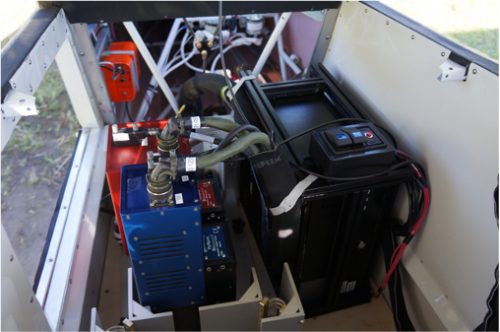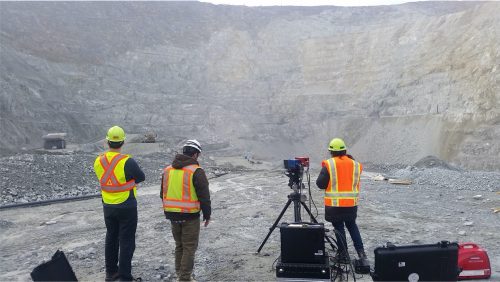UAF’s HyLab is ready for the minerals hunt
May 11, 2021
Rod Boyce
907-474-7185
Hyperspectral imagery can help.
The University of Alaska Fairbanks Geophysical Institute has the only hyperspectral imaging facility in the state at its Hyperspectral Imaging Laboratory. The lab was created in 2014 as the brainchild of Anupma Prakash, who at the time was a geophysics professor and director for the Division of Research at the College of Natural Science and Mathematics and is now UAF provost and executive vice chancellor. The National Science Foundation funded the project.

HyLab’s airborne cameras and ground spectrometers can provide an exceptionally detailed map of an area’s geologic makeup by measuring surface reflectivity in a variety of wavelengths, including many not visible to the human eye. Mining exploration experts can then look at the mineral composition of a surface and deduce what might lie beneath.
"It's a goal for the university to support industrial applications and to help industry and help Alaska’s economy,” HyLab Director Martin Stuefer said. “It’s our goal to help more and to get more involved in industrial work as the industry needs and wants us to.”
“Airborne hyperspectral remote sensing can help target specific minerals in an environmentally least invasive way,” he said.
Mining is a key part of Alaska’s economy, as noted in the annual state proclamation declaring May 10 as Alaska Mining Day. HyLab can help the mining industry and, therefore, the economy.
In his 2020 proclamation, Gov. Mike Dunleav noted that Alaska’s six large producing mines generated a combined $3 billion in annual gross production and provide full-time employment to 4,200 people. He added that more than 200 small-scale mining operations produce 85,000 ounces of gold each year and employ 1,700 people.
HyLab can benefit not only the local, Alaska and national economies but also national defense by helping delineate Alaska’s deposits of critical minerals.
Former President Donald Trump in 2017 directed federal agencies to compile a list of minerals deemed critical to the nation’s economy and defense. That final list included 35 minerals.
Trump wrote in a follow-up order in 2020 that, “For 31 of the 35 critical minerals, the United States imports more than half of its annual consumption. The United States has no domestic production for 14 of the critical minerals and is completely dependent on imports to supply its demand.”
Alaska fits in with the solution to that problem, and the Geophysical Institute’s HyLab has the tools to help.

The U.S. Geological Survey points out that Alaska’s “geographic separation and complex tectonic history” have combined to provide it with mineral resources not common elsewhere in the nation. It states that Alaska has “high potential” for these minerals.
But the USGS also notes that “discovery is hindered by Alaska’s vast size, remoteness, and rugged terrain.”
Hyperspectral surveying, the agency states, can help. It “is one method that can be used to rapidly acquire data about the distributions of surficial materials, including different types of bedrock and ground cover.”
That’s HyLab.
Universities across the nation often provide essential early support to industry because of their research capabilities and government funding. The University of Alaska Fairbanks Geophysical Institute can act in the same manner through HyLab in supporting mineral exploration in Alaska.
“Hyperspectral imaging — imaging with hundreds of colors instead of the usual red, blue, green — has enormous potential to identify regions rich in minerals critical to the U.S.,” Geophysical Institute Director Robert McCoy said. “Scientists in the Geophysical Institute’s HyLab are ready to work with industry to help find these valuable resources.”
ADDITIONAL CONTACT: Martin Stuefer , University of Alaska Fairbanks Geophysical Institute, 907-474-6477, uaf-hylab@alaska.edu


